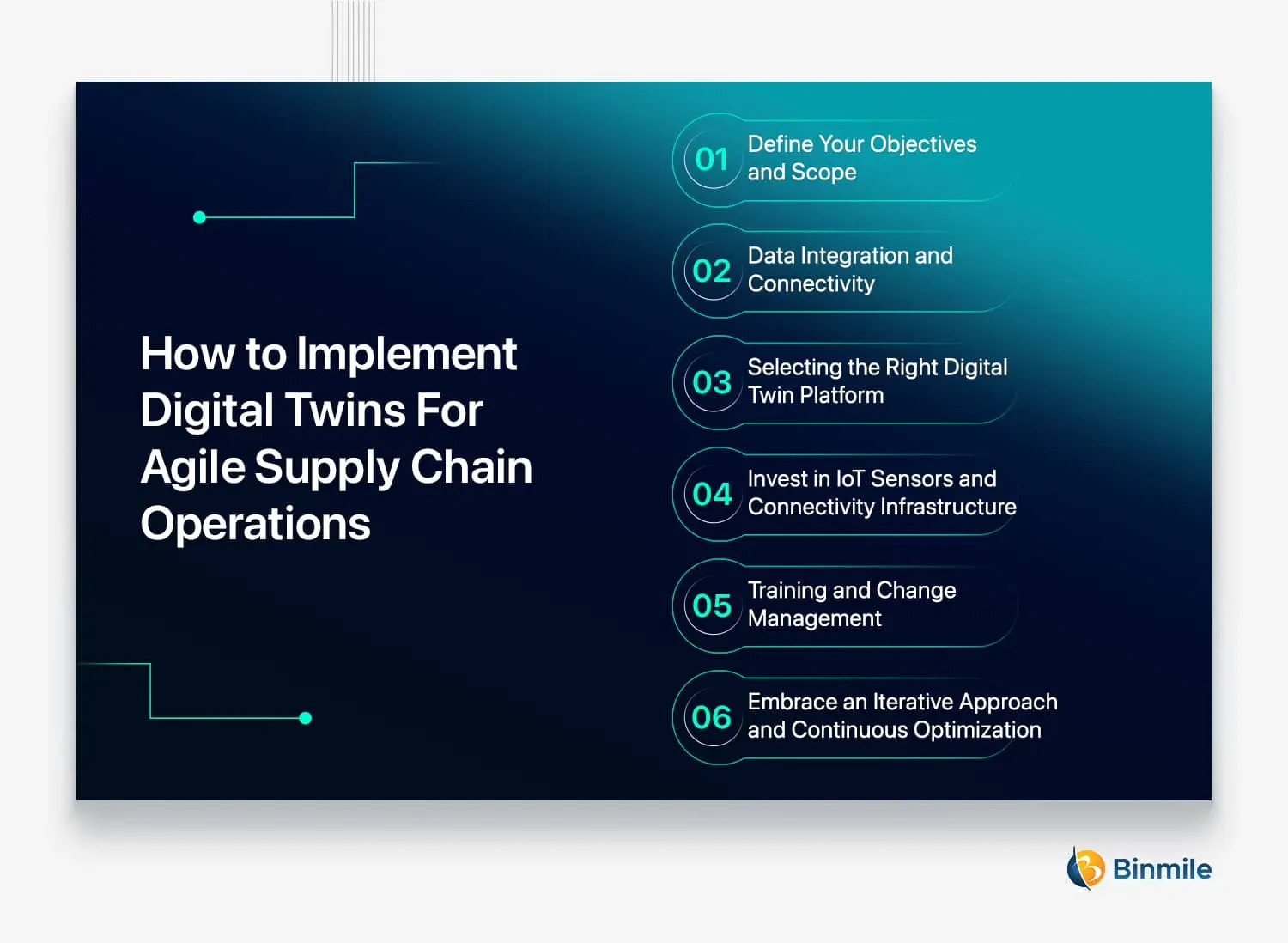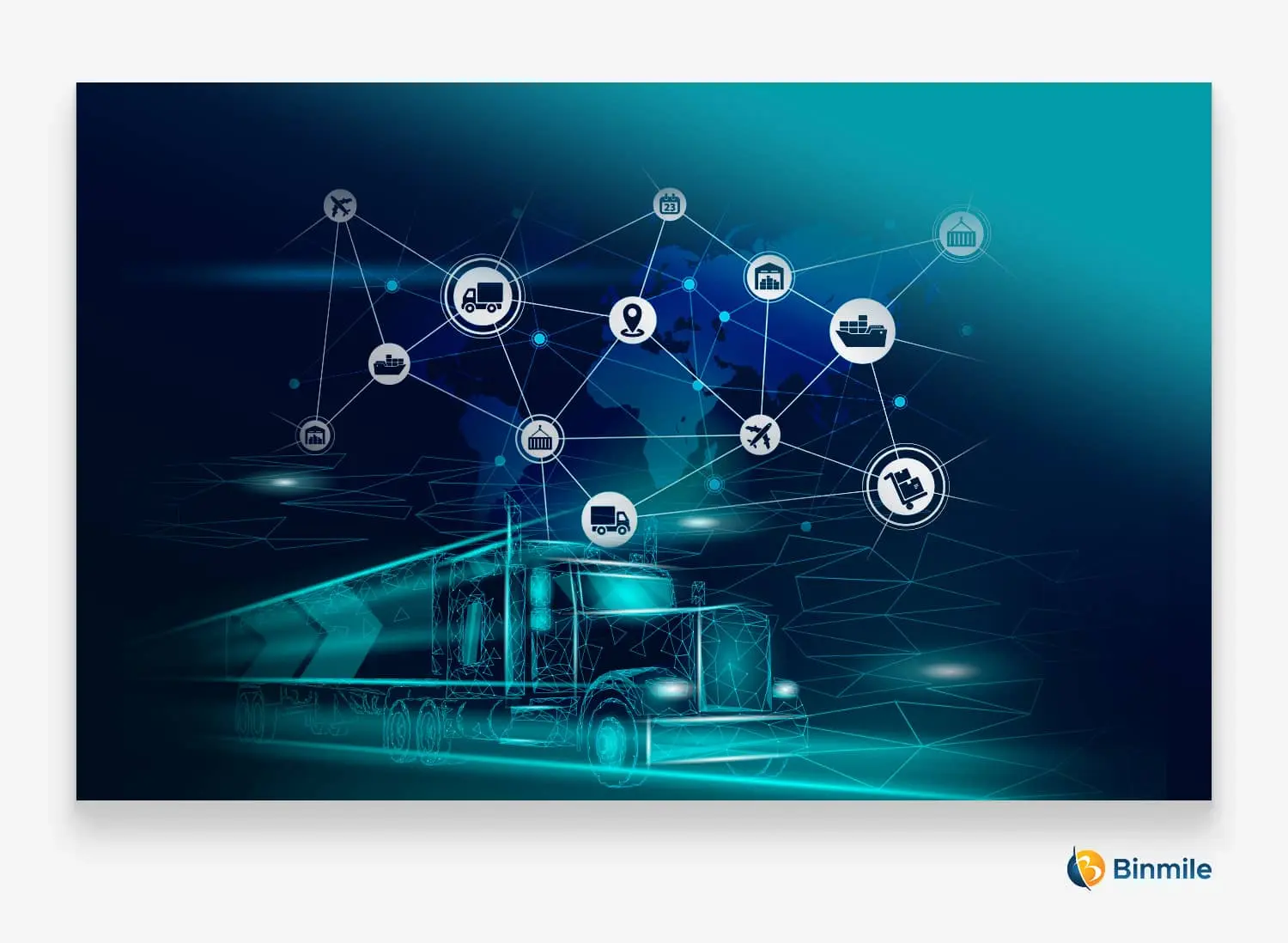- Benefits of digital twins in supply chain management
- digital supply chain management
- digital transformation company
- Digital twin platforms for supply chain simulation
- Digital twin solutions for logistics
- Digital Twin Technology
- Digital twin use cases in supply chain
- Digital twins for inventory management
- Digital Twins Technology
- digital twins technology in supply chain
- Future trends of digital twins in supply chain
- Logistics Software Companies Development Services
- Supply chain digital twin implementation
- supply chain management tools
With the advent of technological advancements, coupled with elevated customer expectations and rising operational costs have made supply chains highly complicated. Critical digital supply chain management issues are due to geopolitical uncertainties and ever-changing economic scenarios, among others that cause high costs or disrupt operations. This has compelled logistics service providers to build adaptive and resilient supply chains, improving efficiency and cost savings. Notably, they no longer have to rely on guesswork or inaccurate methods to gain predictive insights. Instead, courtesy of advanced technologies such as digital and virtual twins, popularly called digital twins can get a wealth of data.
Supply chain digital twins technology can help businesses visualize the bigger picture of the overall ecosystem to mitigate potential risks and boost economic growth. So how do they work? Digital twins technology in the supply chain creates test environments by virtually tracking physical assets, networks, or processes in a testing environment. Doing so, enables them to run simulations to determine the performance and resilience of their operations and promote better decision-making. Therefore, let’s understand what digital twins technology in the supply chain is. What are its benefits and how to implement this transformative technology in your operations?
The Future of Supply Chain Management: A Deep Dive into Digital Twins
What is a Supply Chain Digital Twin?
Digital Twins technology is a virtual model that realistically represents a physical object or process in a real-time supply chain digital twin is one of the supply chain management tools that uses a detailed simulation model of an actual supply chain which uses real-time data and snapshots to predict supply chain dynamics. This helps organizations understand a supply chain’s behavior, forecast abnormal situations, and draft an action plan accordingly.
Moreover, businesses need to monitor and predict potential issues, however, they mostly suffer from a lack of visibility of real-time order status in the supply chain network. This calls for an intelligent supply chain that can adapt to handle such abnormalities and ensure resilience. That’s how a big role supply chain digital twin technology plays, in addition to this, it can help businesses in:
- Understanding supply chain dynamics and behavior
- Discovering bottlenecks in the networks
- Testing supply chain design changes and development
- Monitoring risk and testing contingencies
- Planning logistics and transportation
- Optimizing inventory
- Budgeting resources to serve and cost to serve analysis
- Forecasting and testing operations over the coming days and weeks
Transformative Impact of Digital Twin Technology on Supply Chain Operations

As an emerging technology, the digital twins are empowering businesses with greater control over factors that can disrupt operations. Let’s understand the benefits of digital twins in supply chain management:
- Enhanced Visibility: From raw materials to finished goods delivery, it offers a real-time overview of the entire supply chain. Thus, allowing you to track inventory levels, monitor production lines, and identify potential bottlenecks.
- Optimized Efficiency: It can simulate different scenarios within the digital model that help businesses identify and correct operational inefficiencies. This not only reduces waste, and shortens lead times, but also improves resource allocation.
- Proactive Risk Management: With digital twins technology, businesses can analyze historical data and predict potential disruptions, such as supplier shortages or transportation delays. These timely notifications and reports enable businesses to develop supply chain risk management strategies and lower the impact of any untoward risks.
- Data-Driven Decision Making: Riding on the vast data generated by digital twins, businesses can make better decision-making. Additionally, this data also helps them optimize inventory levels, adjust production schedules, and make strategic sourcing decisions.
Also Read: How to Build Secure Supply Chaim Management Software
6 Steps How to Implement Digital Twins for Agile Supply Chain Operations

Modern supply chains come with complexities that need new kinds of solutions: visibility and control. As a technology, digital twins are a game-changer, we’ve learned their benefits for your entire operation, so let’s understand how to navigate the Supply chain digital twin implementation process:
#1 Define Your Objectives and Scope
Start with developing a blueprint of the direction your digital twin journey takes. Set the objective or result you want to obtain. Ask questions such as: are you hoping to eliminate the issues in inventory management of your production process? Or do you want to implement proactive planning for disruptions? Determine the most important processes, assets, and stakeholders from the multi-tier ecosystem and identify pivotal performance indicators to monitor progress.
#2 Data Integration and Connectivity
To survive in a digital world successfully, your data is the oxygen your digital twin requires. Doing so will ensure that you can store data from different platforms and points in your organization seamlessly. This entails immediate sensor data feeds from a connected device across the network of supply chains, archive data history from the enterprise system already in use, and industry external market information as well. Implement a thorough connectivity infrastructure that works freely and securely for data sharing between both the real world and the digital twin.
#3 Selecting the Right Digital Twin Platform
Go for the appropriate platform for operating digital twins. Research about different types of platforms based on factors such as scalability, flexibility, and compatibility with your existing system. Figure out features search that will help you to achieve your targets, e.g., simulation, monitoring dashboards in real-time, and advanced computers for beta analytics.
#4 Invest in IoT Sensors and Connectivity Infrastructure
To close the gap between the physical world and the digital model, you must deploy IoT sensors and a reliable connectivity infrastructure. These scenarios will gather real-time information from the physical assets for providing two-way communication between your digital twin and the environment. Ensure proper installation and calibration of the sensors to make sure high-quality data is being collected, if it seems an overwhelming process, then seek consultation from an IoT development company for effective solutions.
#5 Training and Change Management
The digital twins enable transformation but it’s important that it’s successfully adopted and on end-user preparedness. Educate and conduct workshops for your workforce with the required skill set to use the devices and thoroughly train them on how it will affect their responsibilities. Cultivate a culture of innovation and continuous learning to encourage widespread adoption and maximize the benefits.
#6 Embrace an Iterative Approach and Continuous Optimization
Foster and adopt an iterative approach, continuously optimizing processes, refining models, and incorporating feedback to maximize the value derived from your digital twin. It’s also essential to monitor the performance metrics and key indicators to identify areas for improvement and adapt your strategies accordingly.
Read More: Role of Blockchain in Supply Chain Management
Wrapping Up
It’s evident that with so many moving parts working together, one error or mishap in the supply chain can quickly derail and cause operational inefficiencies. However, with the advent of digital twin technology, logistics and manufacturing service providers can test logistical changes without impacting the rest of the chain. Digital twins technology in the supply chain not only offers visibility and control but also makes your real-world supply chains more efficient, effective, agile, and resilient. Therefore, the faster companies adopt digital twins technology, the sooner they can scale and innovate.
In this blog post, we discuss an overview of supply chain digital twin models, outline their benefits, and how you can do supply chain digital twin implementation. We now understand how a supply chain leveraging digital twins is the key to remain competitive and resilient. If you also want to turn your supply chain vision into reality and make it more agile, and adaptive, our logistics software development companies can assist.










